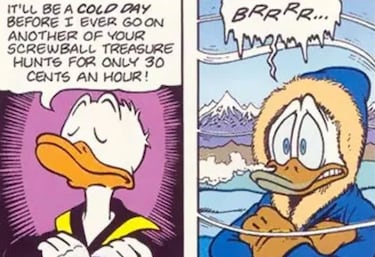The Gilligan Cut, Hollywood’s favorite trope, is in everything from Tarantino films to ‘Stranger Things’ and ‘Avatar’
The live-action ‘Avatar’ has brought back the Gilligan Cut visual joke, and it has somehow caused a debate on modern comedy and popular tropes.

In the world of cinema and television there is a certain joke that is repeated over and over again. A gag that every screenwriter in trouble resorts to. It’s not the pinnacle of comedy, but it almost always works. Called the “Gilligan cut”, this type of joke has become fashionable again on the occasion of Netflix’s live-action adaptation of ‘Avatar the Last Airbender’. Let’s see if you can deduce what it is just by watching the scene:
This joke in 2024….#AvatarTheLastAirbender pic.twitter.com/UpTfhX3z7d
— Abishek (@A_I_M_1999) February 22, 2024
Although the person who uploaded it to Twitter/X considers that these types of jokes are out of place in 2024, the truth is that they are so recurrent as to have their own name and if they are repeated it is because there is no easier way to get a laugh to the viewer. That’s how the “Gilligan cut” theory goes:
“If the character says “I’m not doing this”, no matter how many times they say it, chances are the character will do this for the sake of comedic effect, sometimes even while stating “I can’t believe I’m doing this”

Where does the name Gilligan cut come from?
The Gilligan cut receives its name from ‘Gilligan’s Island’, a series that achieved enormous success in the mid-sixties that used it again and again. In every episode, the main character said one thing and ended up doing the opposite. Curiously, the trope has been inheriting the name of the current program that made it fashionable there. In the United Kingdom, for example, they talk about it as “bicycle cut” because of ‘Last of the Summer Wine’, where whenever the main character went out he added a bicycle to the equation.
The trope is similar and often used with a “smash cut “, like in the mashup below. The tools are often used together for great comedic effect, often cutting dialogue in the middle of it and cutting to the later results, amplifying the impact of the character’s unwillingness yet helplessness to taking part in the call to adventure.
Related stories
There are up to three variants of the Gilligan cut. “The Contrary Cut” shows someone saying repeatedly that something will happen (or that it will not happen) after which exactly the opposite happens. “The Order Cut” is where a character orders another to do something and, without response or complaint, you next see that person doing it and it’s much worse than what the other person let on. And finally, the “Murphy Cut”, based on the famous law. How many times has someone said “It can’t be that bad” or asked “What’s the worst that could happen?” and then find themselves immersed in the worst-case scenario?
However, despite the proven history of the “Gilligan cut”, there are those who question the humor of the joke and those who consider it incredible that in the 21st century, we are still stuck at such a low and simple level of humor (whatever that is).



Complete your personal details to comment